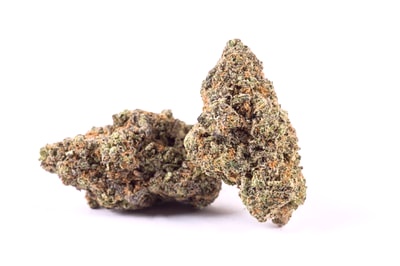If a company’s head grower is competent, the rest of the cultivation team doesn’t need horticulture experience as a prerequisite for hire.
But to prevent costly mistakes, training for new employees should focus on quickly bringing them up to speed on the fundamentals of commercial plant production.
Make sure to prioritize these five concepts for all new cultivation staff:
1. How to keep good records.
Record keeping is critical for everything from troubleshooting to regulatory compliance, yet it’s common for novice growers not to keep any production records at all.
When I visit grow sites that don’t prioritize record-keeping, troubling shooting is at best a guessing game, and at worse, an exercise in futility.
Determining what has happened to a crop usually starts by examining the fertilizer and watering schedule. In the absence of records, this often involves calling around on the radio to ask who last fed the plants. If multiple employees share watering responsibilities, it further complicates the issue.
Record keeping for regulatory compliance ensures that the product is grown following the company’s SOPs. In strictly regulated markets, the quality assurance department will be hesitant to release cannabis for sale if records can’t verify that it was grown in compliance with its SOPs. Non-compliant product can be subject to recalls.
Digital records are best, but even a clipboard and pencil hung where they can be easily accessed are better than nothing.
2. Regular testing is essential.
To ensure that plants receive adequate nutrition, growers should perform soil, water, and fertilizer tests on a regular schedule.
Testing the fertilizer solution’s electrical conductivity (EC) and the fertilizer runoff (leachate) can help identify potential imbalances within the plant. When I request to see these test results, I’m sometimes met with a blank stare. “What’s EC? What do you mean by leachate?”
Don’t let this happen to your cultivation team. These tests should be performed every two weeks during the crop cycle, and the results should be recorded. Ensure that your team knows how to perform these tests, that they have the tools to do it, and they understand how to interpret the results.
3. Timing is key.
Not performing cultivation tasks on time can result in inefficient plant growth and an increased cost of production. Most tasks have a short window of time when they need to be accomplished, and retroactively fixing plant problems caused by missed timing can eat into your bottom line.
Young plants that aren’t spaced on time will grow tall and spindly, requiring extra labor to support them. Mother plants that aren’t pinched on time will grow large and unwieldy and won’t generate a sufficient volume of healthy cuttings when needed. Failing to release predatory insects or apply pest control products on time can result in a disease or insect infestation.
An appreciation for timing among your cultivation team will help to ensure a cost-efficient operation.
4. Know when and how to water.
There is a saying in traditional horticulture: “The one on the end of the hose, grows.”
This means that the person making the day-to-day irrigation decisions for a crop holds the most influence over the health of that crop. Large facilities usually divide up production among various section growers who are tasked with determining when to irrigate their plants.
Most plant problems are caused by under or overwatering. A chronically underwatered crop will grow slowly, yield less, and be more susceptible to insect and disease pressure. An overwatered crop that cannot dry out between irrigations will experience root rot, stalled growth, and plant death.
A plant should be watered once it reaches 50% of the weight of a fully saturated pot. Too much or too little can drastically affect the profitability of your crop. Make sure your team is well-versed in determining when and how to water.
5. Take it easy.
Growers can forget how sensitive plants really are, but they’re soon reminded once their crop begins exhibiting symptoms of stress.
Plants can be shocked by exposing them too quickly to something if they have not been properly acclimatized. This is common when growers move plants from low-light vegetative growth rooms to the blinding light of a flower room. Within a few hours, plants that experience light and heat stress can begin to wilt, and within 48 hours, they’ll start turning yellow.
Plants can also be stressed through benign activities that are done at the wrong time. Spray applications made in the heat of the day or under strong grow lights can burn plants. Fine droplets of water can act like mini magnifying glasses, concentrating the light and permanently damaging the leaves.
Remind your team that plants are more sensitive than we think. Ensure that any significant transitions are well planned out, and make sure to slowly acclimate plants to the new change. It’s better to take one week to slowly acclimate plants than waste three weeks repairing damaged ones.
Your employees don’t need a four-year horticulture degree to grow your crop successfully, but they should understand basic plant production principles. If your in-house training program emphasizes these five essential principles, then you’ll be well on your way to developing a cultivation dream team.
The post Five Key Concepts Everyone on Your Cultivation Team Should Know appeared first on Cannabis Business Executive – Cannabis and Marijuana industry news.






